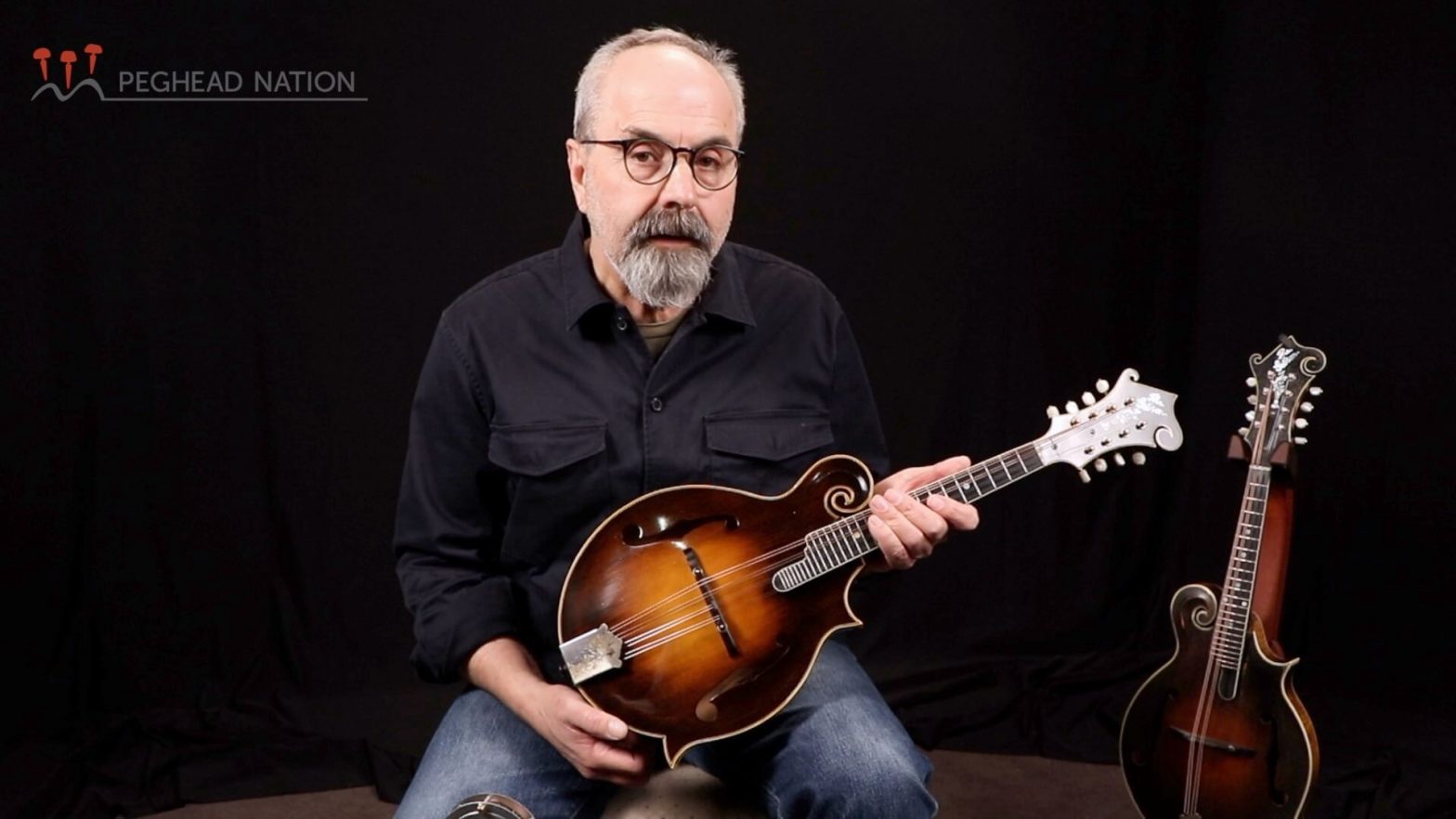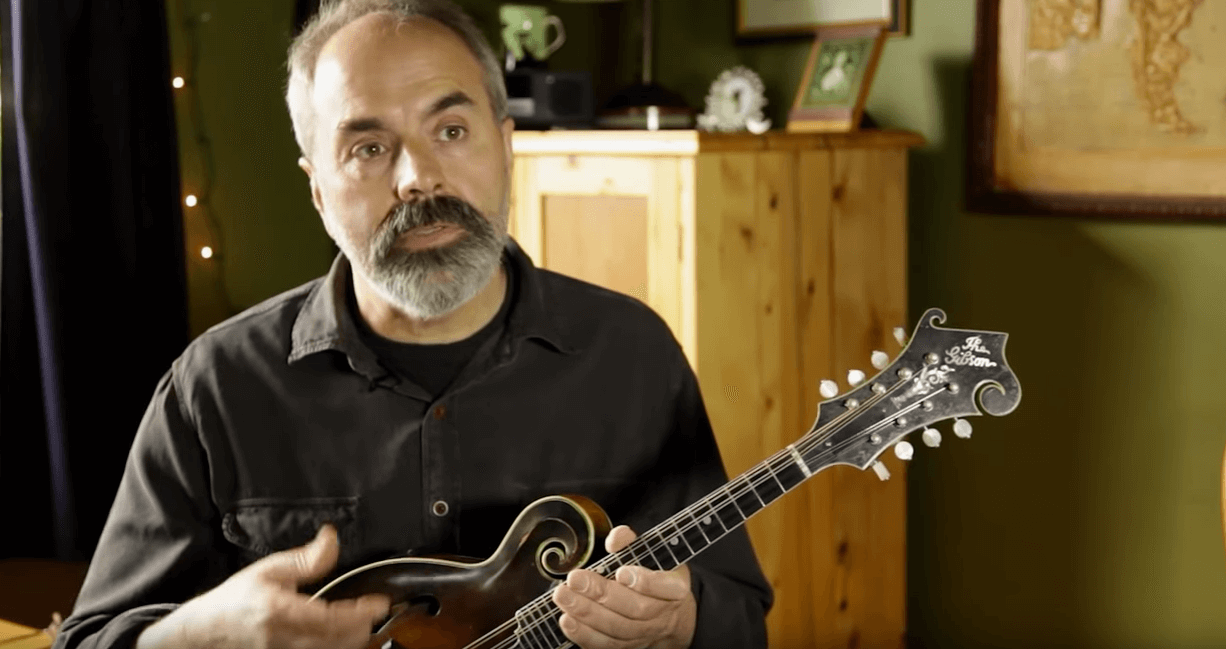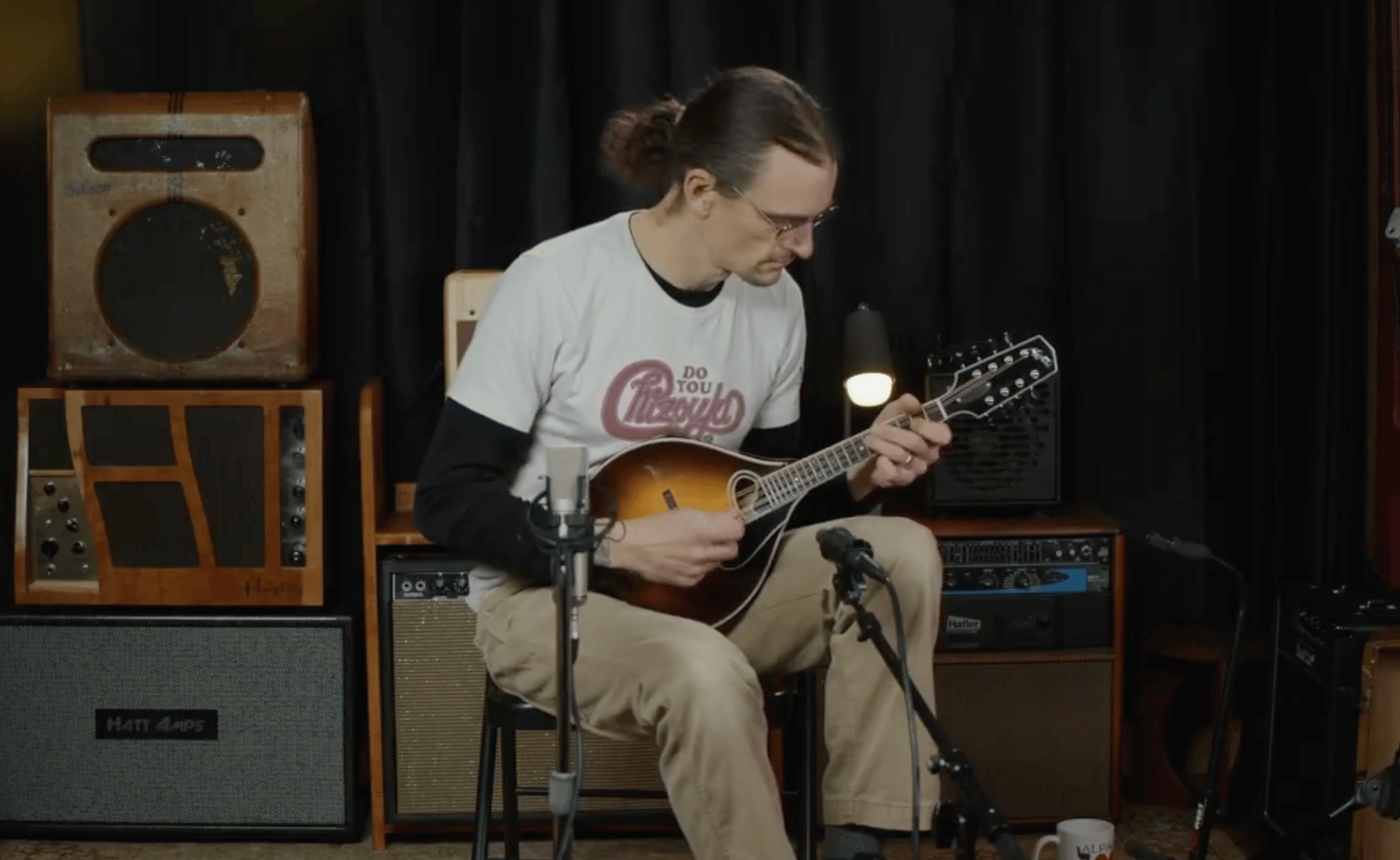1928 Gibson F-5 Master Model “Fern”
A beautiful post–Lloyd Loar era F-5 mandolin.
With its timeless beauty and iconic sound, Gibson’s F-5 is the most coveted mandolin design around. Originally designed by acoustical engineer Lloyd Loar in 1922, the F-5 was more informed by violin design than previous Gibson mandolins. It introduced elements such as parallel tonebar bracing, a longer neck that joined the body at the 15th fret, and a fingerboard extension that floated off the body. Loar left Gibson in late 1924, and the instruments he signed during these first two years of F-5 production are by far the most valuable, sought after by musicians and collectors alike (check out Peghead Nation instructor John Reischman demonstrating his 1924 Gibson F-5 here). After Loar’s departure, Gibson continued to build great F-5s for the remainder of the 1920s, but with general interest in the mandolin declining during the 1930s, fewer instruments were built.
We recently heard from a San Francisco Bay Area Peghead Nation student who owns a beautiful, well-preserved F-5 Master Model built in 1928 (serial number 86104), and we took him up on his offer to demonstrate the instrument in our studio. In this video, Peghead Nation co-founder Dan Gabel and mandolin instructor Sharon Gilchrist discuss and play the mandolin.
Introduced after Loar’s departure from Gibson, the Master Model version of the F-5 continued the fundamental design of the earlier years, though without Loar’s individual fine tuning of the instruments built during his tenure. Shortly before Loar’s departure, Gibson changed the peghead inlay from the “flower pot” design found on earlier F-5s to a “fern” design, and this term is often used to identify these later year models. Later F-5s had larger square position markers in the fingerboard, but this 1928 model is among the last with smaller dot inlays.
The mandolin still has its original case, and while its current owner has removed the pickguard, this too is kept safely in the case.
Without a doubt, the history of Gibson’s F-5s is fascinating. Anyone who would like to dive deeper in understanding the variations from different eras should check out Walter Carter’s great book, The Mandolin in America, as well as www.mandolinarchive.com/ and many discussions on Mandolin Cafe.
Related Vintage Vault Posts
 |
1949 Gibson L-5NPeghead Nation instructor Matt Munisteri demonstrates the guitar he uses in his new Western Swing Guitar course. Read More |
 |
1923 Gibson F-5 MandolinJohn Reischman demonstrates a Lloyd Loar-signed F-5 that’s in nearly mint condition. Read More |
 |
1931 Gibson RB-1Bill Evans demonstrates the vintage instrument known as the “Grace Attfield Banjo.” Read More |
 |
John Reischman’s 1924 Gibson F-5Mandolin virtuoso discusses and demonstrates his legendary Lloyd Loar mandolin in this Fretboard Journal video. Read More |
 |
1930 Gibson Granada BanjoBill Evans demonstrates his 1930 Gibson Granada banjo. Read More |
 |
1957 Gibson L-5CESPeghead Nation instructor Matt Munisteri demonstrates his rare Gibson electric archtop with a special pickup configuration. Read More |
 |
1921 Gibson A-4Peghead Nation’s Irish Backup Guitar instructor Flynn Cohen demonstrates his vintage mandolin. Read More |
 |
1960 Gibson LG-2A classic Gibson small-body with a cross-continental history. Read More |
 |
1927 Gibson Style 5 DeluxeBill Evans demonstrates a classic Gibson banjo. Read More |
 |
1922 Gibson A MandolinMarla Fibish demonstrates the family heirloom that has become central to her musical voice. Read More |






